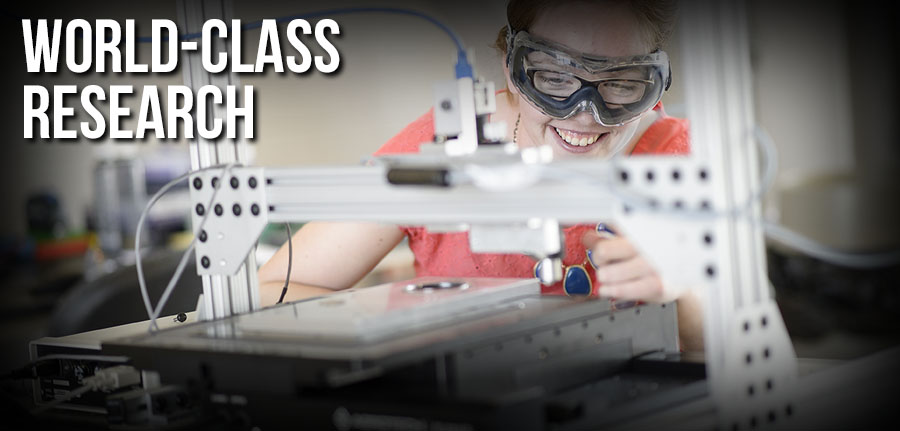Research

Herrick Labs focuses on several areas, themes, and applications for research. They include:
Research in the HVAC & Refrigeration Area and Living Labs is focused on energy utilization, environmentally friendly refrigeration, and building control to increase comfort and reduce energy consumption. Topics include:
- Reliability and Performance of Positive Displacement Compressors (up to 250 hp)
- Alternative and Natural Refrigerants
- Alternative Cooling Cycles
- Small and Large Scale Building Systems Modeling and Control
- Alternative Energy Sources for Interior Space Conditioning
- Energy Utilization and Control of Thermal Systems
- Indoor Air Quality
- Thermal Comfort
- Lighting and daylighting systems
- Occupant interactions with building systems
- HVAC&R Condition Monitoring and Diagnostics
- Component and System Modeling
- Compressor Design
- Small Scale Cooling Devices
- Sensors
- Airflow in and around buildings
- Environmental control systems
- Indoor environment
- Click here for a complete overview and list of theses in Thermal Systems (PDF)
- Click here for a complete overview and list of theses in Compressor Research (PDF)
- Click here for a complete overview of Energy and Environment Research (PDF)
The Acoustics, Noise, and Vibration Research Area and High-Bay Flexible Lab host many aspects of acoustic and vibration research, including:
- Environmental Acoustics: propagation and transmission
- Measurement and Signal Processing Techniques, Acoustical Holography, Array Measurements
- Numerical Analysis and Design Techniques
- Product Sound Quality
- Community Response to Noise (Annoyance, Sleep Disturbance, Speech Interference, etc.)
- Modeling and Design of Acoustical Materials and Treatments
- Microperforated Sound Absorbers
- Active Noise and Vibration Control
- Tire Noise
- IT and AV Equipment Noise Control
- Fan Noise
- Brake Squeal
- Friction Induced Vibration
- Modeling of nonlinear viscoelastic material elements in dynamic systems
- Vibration and quasi-static settling behavior of seat-occupant systems
- Modeling and Design of Mechanical and Electromechanical Amplifiers
- Aeroacoustic Noise
- Click here for a complete overview and list of theses in Acoustics, Noise Control, and Vibration (PDF)
Work in the Perception-Based Engineering Lab focuses on people's perceptions of stimuli, and their influence on satisfaction, comfort, annoyance and performance. This includes:
- Modeling of Sound Perception
- Sleep Disturbance, Annoyance
- Effects of Noise on Aging Populations
- Performance and Perception in Noisy Environments
- Driving Safety and Highway Design
- Image Perception and Image Quality
- Haptics: interface design, communications
- Multi-modal interactions: Visual and Acoustic; Acoustic & Vibratory; Visual and Haptic
- Vibration Perception and Vibration Quality
- Sound Quality
- Thermal Comfort and Air Quality Impacts
- Customized lighting and daylighting control
- Click here for a complete overview and list of theses in Perception-Based Engineering (PDF)
Work in the Engine Test Cells focuses on performance and fuel efficiency:
- Physics-based closed loop control of multi-cylinder Homogenous Charged Compression Ignition (HCCI)
- Clean and efficient utilization of alternative fuels (biodiesel, ethanol, Fischer-Tropsch) via estimation and accommodation of variable combustion behavior across fuel type, blend ratio, and feedstock
- Emissions and after-treatment system modeling, diagnosis and control, e.g, particulate trap monitoring
- Hybrid engine controls
- Sound quality of diesel engine noise
- Experimental techniques to develop source and propagation path acoustics models of diesel engine noise
- Electronic fuel injection for single-cylinder diesel engine to reduce noise
- Click here for a complete overview and list of theses in Engine Research (PDF)
Much of the work in the Acoustics Lab, Engine Lab, and Perception-Based Lab focuses on cars, trucks, airplanes, and other vehicles. This includes:
- Fault detection in suspension systems and tires
- Identification and control of after-treatment system behavior
- Acoustical treatments for aircraft and road transportation
- Measurement and modeling of rattle and squeal phenomena
- Aeroacoustic noise: sun roofs, wing mirrors, seals
- Tire dynamics, road-tire interactions and pavement noise
- Speech intelligibility for aging drivers
- Sound quality of motor-driven automotive components
- Community impact of environmental noise from aircraft, road transportation and trains
- Vibration modeling of automotive systems: suspension systems; exhaust systems; seat-occupant systems
- Fuel cell modeling, diagnostics, and control
An overarching theme of Herrick's research is systems analysis and implementation, whether it be prognostics, diagnostics, or electromechanical systems applied to buildings, engines, robots, or people. This includes:
- On-line, Intelligent Control and Engine Diagnostics
- Advanced Data Analysis and System Identification
- Microprocessor Control Applications
- Nonlinear Adaptive Robust Control Techniques
- Control of Electro-Hydraulic Systems
- Model based fault detection and fault tolerant controls
- Thermal systems equipment condition monitoring
- Energy efficient maintenance scheduling
- Structural health monitoring: applications include off-road military vehicles, suspension systems, aircraft, spacecraft, cabling systems, wind turbines
- Combustion misfire detection
- Autonomous Robotic Systems: aerial and ground robots for space and agricultural applications
Affiliations and Collaborations
- MAHA Fluid Power Lab
- PHASE: Purdue Hearing & Acoustics in Science and Engineering
- Cooling Technologies Research Center
- Safe Quiet Durable Highways: Civil & Mechanical Engineering
- FAA/NASA/Transport Canada PARTNER COE: Partnership for AiR Transportation Noise and Emissions Reduction
- FAA ACER COE : Air Cabin Environment Research
- Discovery Park: Energy Center, Center for the Environment, Center for Advanced Manufacturing
- Mechanical Engineering Tribology Lab
Interdisciplinary Faculty Collaborations
- Speech Language and Hearing Sciences: Purdue & CUNY. Beth Strickland, Michael Heinz, Josh Alexander
- Psychological Sciences: Purdue & Memorial University. Robert Proctor, Zyg Pizlo
- Health Sciences and Kinesiology: Shirley Rietdyk
- Electrical Engineering: Hong Tan, Steve Pekarek, Jan Allebach, Ed Delp, Jianghai Hu
- Biomedical Engineering: George Wodicka, Michael Heinz
- Electrical and Mechanical Engineering Technology: Mark French, Davin Huston, Haiyan (Henry) Zhang
Learn more about the labs where this research takes place:
Herrick Labs • 177 S. Russell St., West Lafayette, IN 47907 • (765) 494-2132 • hlab@purdue.edu
